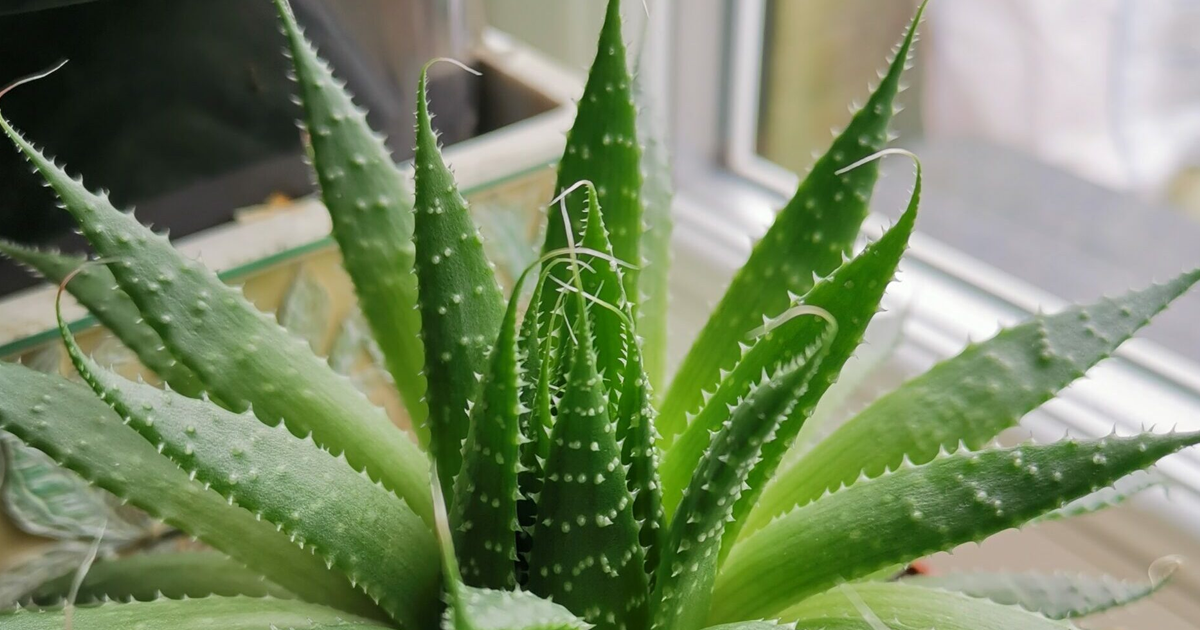
Most people adore their aloe plants for their low maintenance, medicinal attributes, and striking features. However, if your aloe happens to droop, it is a sure sign of something being wrong. A healthy aloe should have firm, upright leaves that stand tall and vibrant. If yours happens to be sad and droopy, identification of the root cause forms the first step to revive it. Let’s go through the seven most common causes for drooping aloe plants and how to correct them.
1. Overwatering
The most common reason for drooping aloe plants is overwatering. Aloe vera is a succulent, meaning it stores water in its leaves and thrives in arid conditions. Overwatering leads to waterlogged soil, root rot, and weakened leaves that begin to droop.
How to Fix It:
Check the soil: If it feels wet or soggy, stop watering immediately.
Repot if needed: Take the plant out of its pot, remove any rotting roots, and plant it in new, well-draining succulent soil.
Adjust watering schedule: Allow the soil to dry completely between waterings. Watering once every 2-3 weeks usually is enough.
2. Underwatering
It can also droop the aloe leaves because the plant pulls out moisture from its leaves to sustain itself in the absence of water for some time, thereby causing them to become limp and shriveled.
How to Fix It
Rehydrate the soil: Water the plant very well, letting excess water out.
Set a schedule: Check the dryness of the soil and water the plant when the top 2-3 inches are dry. Do not allow it to become too dry for too long.
3. Bad Soil
Aloe plants thrive in well-draining soil, which means the water should not collect around their roots. The standard garden soil or heavy potting mix may retain too much moisture, and the leaves droop.
How to Correct It:
Repot in the right soil: Use a cactus or succulent-specific potting mix. Alternatively, create your own mix by combining regular potting soil with sand or perlite.
Ensure proper drainage: Make sure the pot has drainage holes to allow excess water to escape.
4. Lack of Sunlight
Aloe plants thrive in bright, indirect sunlight. Insufficient light can weaken the plant, causing it to stretch (a phenomenon known as etiolation) and droop.
How to Fix It:
Move the plant: Place it in a bright, indirect light location, such as a south- or west-facing window.
Gradual adjustment: If the plant has been in low light, gradually increase its exposure to sunlight to avoid sunburn.
Supplement with grow lights: If natural light is limited, use grow lights to provide adequate illumination.
5. Temperature Stress
Aloe plants prefer temperatures between 60°F and 80°F (15°C to 27°C). Exposure to extreme cold or heat can stress the plant, causing its leaves to droop.
How to Fix It:
Avoid temperature extremes: Keep the plant away from drafts, air conditioning vents, and heaters.
Bring indoors during cold weather: If you’re growing your aloe outdoors, move it inside when temperatures drop below 50°F (10°C).
Stable environment: Consistent temperatures should be maintained at levels within the range the plant prefers.
6. Pest Infestation
Pests, including aphids, mealybugs, and spider mites, can infest an aloe plant. They will feed on its sap and cause the leaves to weaken, and eventually the whole plant to droop over time.
How to Fix It:
Inspect the plant: Check for signs of pests, including tiny bugs, webbing, or sticky residue on the leaves.
Deal with the infestation: Wipe the leaves with a cotton ball saturated in rubbing alcohol or spray the plant with a mixture of water and insecticidal soap.
Monitor regularly: Check the plant periodically for signs of repeating infestations.
7. Root-Bound Plant
When your aloe plant has filled up its container, the roots become congested and cannot soak up nutrients efficiently. This can cause drooping leaves and stunted growth.
How to Fix It:
Repot the plant: Select a pot that is 1-2 inches larger in diameter than the current one.
Loosen the roots: Carefully untangle the roots before placing the plant in its new pot.
Refresh the soil: Use fresh, well-draining soil to give the plant a nutrient boost.
Preventing Future Drooping
To keep your aloe plant healthy and upright, follow these general care tips:
- Water wisely: Check the moisture of the soil before watering.
- Provide proper light: Ensure bright, indirect sunlight.
- Use the right soil: Choose a well-draining mix specifically designed for succulents.
- Monitor for pests: Inspect the plant regularly for signs of infestation.
- Repot as needed: Upgrade the pot size every couple of years to accommodate growth.
Conclusion
Drooping aloe is a telltale sign that something is wrong. Whether you are overwatering, there is a lack of sunlight, or you have pests, fixing whatever is causing the problem will help your plant improve right away. By understanding what your aloe needs, you can stay on track with practices that allow it to thrive for many years ahead. With a bit of care and attention, those limbs and leaves will bounce back, shaking their drooping once again.







